- Home
- Tom Clancy
SSN Page 22
SSN Read online
Page 22
Currently, two of Independence’s E-2Cs were operating around the carrier, providing radar coverage out to many hundreds of miles. F-14Ds, armed with AMRAAM and Phoenix missiles, were providing air cover around the clock for the Battle Group. This was all happening while two dozen F/A-18s were being armed with two Harpoon antishipping missiles, two underwing fuel tanks, and two Sidewinder missiles each, in an effort to prepare them for the ensuing battle. Twelve F/A-18s also were being kept in reserve in case the air battle got too sticky for the F-14s to handle alone.
On board the carrier’s escorts, their crews were preparing as well. The entire group’s radars, including the Aegis radars, were shut down. The surface group was relying entirely on the APS-145 radars flying overhead on board the E-2 Hawkeyes. The Battle Group commander wanted to deny the Chinese the opportunity to detect American radar waves via ESM. Without an exact location on the American warships, the Chinese would not be able to launch their missiles until they came within either visual range or their own radar range — and the commander did not intend to allow them to get anywhere near that close.
Beneath the surface, operating twenty miles away from the carrier on either side, were the USS Bremerton and the USS Columbia. These submarines were playing defense to Cheyenne’s ASW offense. They waited just far enough away from the carrier to not be affected by the group’s noise while staying close enough to attack incoming threats such as Romeo class submarines armed with shorter-range torpedoes. Both Bremerton and Columbia were aware that the newer Akulas carried several long-range torpedoes, including the 65cm Type 65 wake homing torpedo, which had a range in excess of fifty nautical miles. These longer-range threats would have to be handled by Cheyenne or the S-3 Viking aircraft.
On board Cheyenne, Mack was well aware that he would need to take care of the most dangerous ASW threats to Independence. The Akula submarines would be hard to detect and had weapons that could attack the carrier from long distances. He would have to take special care to deal with these threats, even if it meant letting the noisier, less dangerous Romeos and Mings slip by, leaving them for Bremerton and Columbia to handle.
Word passed rapidly throughout the Battle Group that evidence strongly suggested that the Chinese task force had arrived at the Spratly Islands and was now beginning to refuel. That told Mack that the battle was about to begin.
Cheyenne was in perfect position to launch her Tomahawk cruise missiles at the refueling warships and their piers, but Mack agreed with the Battle Group commander’s decision not to. Not even Cheyenne could have taken out all sixty ships, and launching her Tomahawks would have given away Cheyenne’s position. That would have risked exposing her to any Akulas in the area, and hampered her in her ASW mission.
Mack would have liked to go after the Chinese ships while they were still no threat to the Independence Battle Group, but he agreed with the decision. He would wait, silently, until the enemy submarines began to show up on his sonar consoles.
* * *
Cheyenne wasn’t the only U.S. asset in the area with Tomahawks on board. The USS Hewitt’s entire Mk 41 vertical launch system had been loaded with sixty-one land-attack variants of the Tomahawk cruise missile. And as the Chinese ships steamed into the Spratlys, Hewitt received orders to launch her missiles.
Within several minutes, Hewitt’s entire arsenal had been fired and the Tomahawk missiles headed, at low altitude, for the Spratly Islands.
By now, USCINCPAC had provided the ships in the area with extremely accurate digital terrain data of the islands. This intelligence, combined with the accuracy of the Tomahawk’s GPS, ensured an unprecedented accuracy when the Tomahawks arrived at their destination.
Forty-six minutes later the Tomahawks arrived at their targets. One by one the missiles impacted, giving the Chinese their first indication that perhaps the attack on the carrier Independence was not such a good idea after all.
At the naval bases where the Chinese task force was refueling, many of the piers where the ships were pulling in to be refueled were completely and utterly destroyed.
In all, twenty-three Chinese ships and submarines were destroyed outright. The explosions and fires resulting from the Tomahawks wreaked havoc on the firefighting efforts of the small damage-control contingents at each of the mini-bases.
Ten more fast attack craft and four submarines were soon destroyed in secondary explosions also caused by the Tomahawks.
All in all, following the American Tomahawk attack, the total Chinese task force of sixty-two naval vessels was cut down to twenty-five ships, including eighteen surface ships and seven submarines: three Romeos, two Mings, one Kilo, and a single Akula. Of the eighteen surface ships remaining, not all of them had the fuel to fight the Americans and then return to China — but that didn’t matter. The order came down from above that all twenty-five ships would fight — whether they had enough fuel or not.
Win or lose, many of the Chinese sailors would not be coming home from this battle.
* * *
Cheyenne’s sensitive sonars picked up the sounds of destruction as Hewitt’s Tomahawks found their marks. These noises were followed almost immediately by the distinctive sounds of the surviving Chinese submarines running out to sea.
Mack ordered Cheyenne to proceed to periscope depth. Once there, he radioed Independence, alerting her that the Chinese vessels had started in her direction. When that had been done, Mack manned battle stations and took Cheyenne back down to a safer depth.
“Conn, sonar,” the sonar supervisor reported, “we’ve got far more than a dozen contacts headed in this direction.”
“Sonar, conn, aye,” Mack said. “Make tubes one and two ready in all respects, including opening the outer doors.”
As was standard aboard Cheyenne, all four of her torpedo tubes were already loaded with Mk 48 ADCAP torpedoes. She was now preparing to use them.
Cheyenne was waiting at a distance of about one hundred miles west of Ladd Reef, one of the westernmost points in the Spratly Island chain. Independence was operating two hundred miles west of Cheyenne’s position, three hundred miles from Ladd Reef.
The Chinese navy was not rated among the world’s finest. As Mack listened to the reports coming in from his sonar supervisor, he could see why.
Active sonar was good for in-close work. Used properly, active sonar could give a competent submariner an effective firing solution, map a minefield, or help navigate an unfamiliar trench. Used poorly, in the hands of incompetent or inexperienced sailors, active sonar was the equivalent of hanging a target on the side of your ship and inviting the enemy to fire.
That’s what the Chinese were doing as they sped toward the Independence carrier group. Many of the oncoming surface ships were pinging away with their active sonar, obviously searching for American submarines.
Mack was delighted. He could hardly believe it when Cheyenne’s TB-23 thin-line array picked up faint signals that matched the variable-depth active sonar fitted to the new Chinese Luhu destroyers. The Chinese ships were too far away to detect Cheyenne, but their active sonar was illuminating their own submarines and providing Mack with both range and targeting data on the Chinese.
Nearly thirty minutes passed before the active sonar source got close enough for the BSY-1 to decipher its range from the bearing rate.
“Captain,” the sonar supervisor reported, “it’s definitely coming from a Luhu destroyer. BSY-1 range is 88,000 yards to the pinging Luhu, bearing 092, but sonar isn’t picking up any other signals yet.”
Mack thought to himself that the Luhu, designated Master 98, must have been the first Chinese vessel to leave the Spratly Island chain after the Tomahawk cruise missile attack. He was sure, however, that it wouldn’t be the only one.
Mack had to play a delicate balancing game now. As the Luhu drew closer, Mack knew that eventually he would come into active sonar range of the destroyer, and the Luhu would detect Cheyenne. Before that happened, Mack would have to take the destroyer out with an Mk 48. B
ut he didn’t want to do that too soon. He was relying on the Luhu’s sonar to paint a picture of exactly what Chinese ships were headed his way, and he didn’t want to alert the other Chinese captains to the mistake they were making.
“Conn, sonar, we just detected another contact, this time a submarine. The active Luhu sonar was reflected off the submarine’s hull. We can’t tell what class it is yet.” Mack designated the submarine Master 99.
“Conn, sonar, we just got another active ping! This one’s coming from a Chinese Luda,” reported the sonar supervisor.
“Range to the new contact is 82,000 yards,” reported a BSY-1 operator as Mack designated the Luda Master 100.
Mack would like to have gone to periscope depth so he could alert Independence, but he dared not give away his position. He hoped that on the surface, the Battle Group ships were seeing the same things that Cheyenne was hearing.
He needn’t have worried. He couldn’t tell it on board Cheyenne, but even as he was worrying about the ships he was assigned to protect, wave upon wave of F/A-18s were launching off the deck of Independence. F-14s were waiting in the air to escort them to their targets in case any Chinese aircraft were to take to the sky.
The first raid from Independence consisted of twenty F/A-18 Hornets and seven F-14 Tomcats flying cover. These were also escorted by a single EA-6B Prowler intended to jam Chinese radar, which might otherwise be tracking the attacking jets.
As soon as the F/A-18s closed to within one hundred miles of their target, they switched on their APG-73 radars. Prior to this they had been relying on information from the E-2Cs and the F-14s, which carried a new passive infrared search-and-track system, to alert them to any changes in the Chinese operation.
But the Chinese, though reeling from the Tomahawks, weren’t finished yet. They had indeed learned from their earlier air assault, and as soon as the EA-6Bs ALQ-99 radar jammer began jamming their ground radar on the Spratly Islands, they launched their secret weapon — air defense fighters. Sixteen SU-27 Flankers and over thirty J-7s, Chinese variants of the MiG-21, lifted off from their tiny bases in the small islands of the Spratlys.
The F-14s’ radar detected the swarms of Chinese fighters as soon as they lifted off into the air. Approximately two hundred miles from the carrier Independence and just over one hundred fifty miles from the Spratlys, the F/A-18s began picking up speed in order to target their Harpoon missiles at the Chinese fleet before the enemy fighters arrived on the scene.
The F/A-18s formed single-file lines and began launching two Harpoon missiles apiece. After firing, they turned and flew back toward Independence to refuel and rearm.
Before the F/A-18s returned, Independence launched some of the fighters she normally kept in reserve. Six more F-14s and four F/A-18s began racing from the decks of the carrier in an effort to join in the fight.
The F-14s escorting the strike group attacked the Chinese fighters first. Each of the F-14s was armed with four long-range Phoenix missiles, two medium-range AMRAAMs, and two short-range Sidewinders. The F/A-18s flying in to assist had been fitted with four AMRAAMs and two Sidewinders apiece. As soon as the first SU-27s entered within 120 miles of the F-14s, the first wave of AIM-54C Phoenix missiles were launched at the oncoming Chinese aircraft.
* * *
The success of Independence and her aircraft was, ironically, making things more difficult for Cheyenne. Relying solely on her sonar, she was having a difficult time attempting to grasp what was going on above her. Explosion after explosion from the direction of the Chinese task force told Mack that the American aircraft had begun their attack, but he would have to wait until the noises died down to figure out how many ships were left and which submarines he would target.
Mack had just begun what he thought would be a long wait when sonar reported active sonar from a submarine contact. The continuing loud explosions made it nearly impossible to determine the range. The underwater sonar environment was difficult to interpret using only passive sonar — but Mack refused to use his active suite; he knew it would give away his position.
“Conn, sonar, we just got the classification of that submarine that was active,” the sonar supervisor said. “It’s an Akula!”
That got Mack’s attention.
Within minutes, the fire-control coordinator reported, “Range to the Akula, Master 105, is 33,000 yards; she must have snuck up on us during the air attack.”
He was probably right, but that didn’t make Mack feel any better. Letting the Akula get that close was a mistake, and Mack knew he had to make up for it. To do that, he had to maneuver Cheyenne closer to the Akula.
Overhead, the barrage of explosions continued, indicating that the immense carrier attack had still not ended.
Slowly Cheyenne increased speed to six knots and began proceeding in the direction of the Akula, the quietest non-friendly submarine in the world. The only good thing, from Mack’s perspective, was that the Chinese Akula was still pinging away. Their Russian-made passive sonar was worthless in the current underwater environment, and the only way they could detect contacts was to use their active sonar.
“Range to Master 105 is now 28,000 yards,” reported the fire-control coordinator.
“Firing point procedures, tubes one and two, Master 105,” responded Mack.
Both tube outer doors were already opened and ready, and because the Akula was using her active sonar they now had an accurate firing solution on the Chinese submarine.
“Match sonar bearings and shoot, tubes one and two, Master 105,” ordered Mack.
The two Mk 48s were fired in the direction of the Akula and Mack kept the guidance wires attached for as long as possible. He didn’t want these torpedoes to miss.
As the Mk 48s left their tubes and closed the distance to the enemy submarine, the sonar room and combat systems officer provided continuous updates on their status. The final updates came after ten minutes.
“Conn, sonar, two explosions in the water, bearing 079. The Mk 48s just detonated.”
Mack acknowledged the report, but he wasn’t as elated as he’d have liked. He’d made a mistake, and against a better opponent that mistake could have been deadly.
He wondered how things were going on the surface, and whether any of the other American captains had made similar mistakes.
* * *
They hadn’t. Not a single shot had gotten through Independence’s defenses.
Of the attacking Chinese fleet, not a single surface ship remained undamaged. The few surviving Chinese sailors had been forced to abandon their sinking warships and drifted in lifeboats. Around them, strewn in an unorganized pattern in between many of the small ships, lay the remnants of the Chinese fighters and their air defense effort, which had attempted to stop the American antishipping attack. The Chinese action had failed — miserably.
The Americans attacked the Chinese ships and aircraft so effectively that not one American fighter had been lost. Thirty-four high-performance Chinese aircraft were destroyed in the battle, along with eighteen surface ships. Now the hope of the Chinese navy lay with their six remaining submarines: three Romeos, two Mings, and one Kilo.
* * *
The explosions had stopped and, with the exception of the occasional Chinese ship sinking beneath the waves, the water was again quiet beneath the South China Sea. As the background noise faded, Cheyenne was once again able to use her passive sonar and to begin to build a picture of what they faced.
“Conn, sonar, we’ve got numerous sonar contacts — probable submarines. We can’t tell quite how many at this point, but it’s definitely more than two. The contacts sound like they may be operating close together.”
“Sonar, conn, aye.”
Mack had made one mistake based on overconfidence. He wasn’t about to do that again.
“Okay,” he said to the communicator, “let’s get some help here. Draft a message to Bremerton and the SEC (submarine element coordinator). Ask them if they could give us a hand with these numerou
s submarine contacts.”
Fifteen minutes later, word was sent to Bremerton. Cheyenne’s sister submarine, upon receipt of the message over her floating wire and concurrence of the SEC, began running at flank speed in an effort to meet up with Mack and his crew.
The Chinese diesel submarine captains knew that they were in trouble. Once their refueling points were destroyed, they’d lost all hope of striking a significant blow against the Americans. Without the chance to fully fill their diesel fuel tanks at their base in the Spratlys, each of the submarines was running low both on fuel and on battery power.
Communicating with each other as quietly as possible, they all agreed that their best chance now was to simply try to survive. A slow, quiet run for their home waters might get them back to mainland China. If they were lucky. But, as Mack had found out earlier, luck was a fickle, fragile thing, and never to be counted on.
* * *
Once Bremerton arrived on the scene in her assigned depth zone, she established communications with Cheyenne via underwater telephone. That allowed Mack to pass the word that a large Chinese submarine group had been detected some distance away and that the Chinese group had begun to head back in the direction of China, bearing 010.
Bremerton and Cheyenne conferred and laid their plans. Then they separated, Bremerton on course 300 and Cheyenne on course 040. The two American submarines had begun stalking their prey.
One by one, Cheyenne and Bremerton found the fleeing diesels. The Chinese submarines, however, were so low on battery power that they could put up no fight at all. Mack found it almost like shooting at anchored ships. All the Chinese could do in defense of their lives was to launch a few decoys. The decoys failed, and after they had run out there was nothing left for the Chinese captains to do but just wait, one by one, until they were destroyed by the American submarines.

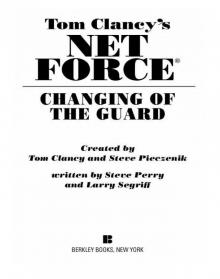 Changing of the Guard
Changing of the Guard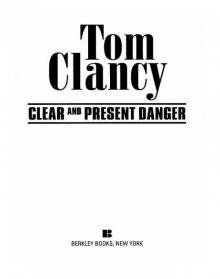 Clear and Present Danger
Clear and Present Danger Hounds of Rome
Hounds of Rome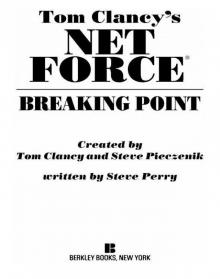 Breaking Point
Breaking Point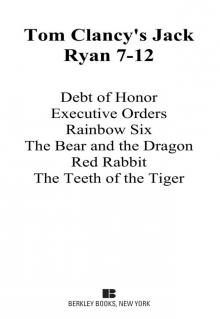 Tom Clancy's Jack Ryan Books 7-12
Tom Clancy's Jack Ryan Books 7-12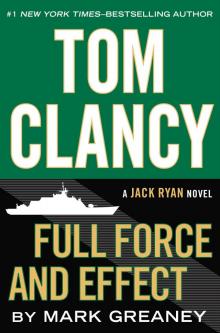 Full Force and Effect
Full Force and Effect The Archimedes Effect
The Archimedes Effect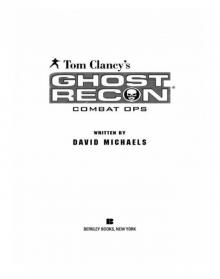 Combat Ops
Combat Ops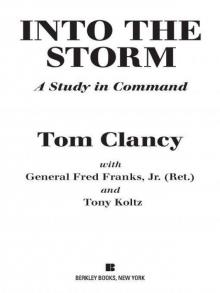 Into the Storm: On the Ground in Iraq
Into the Storm: On the Ground in Iraq Under Fire
Under Fire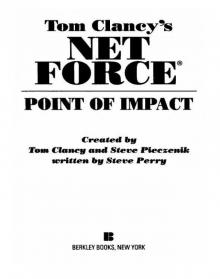 Point of Impact
Point of Impact Red Rabbit
Red Rabbit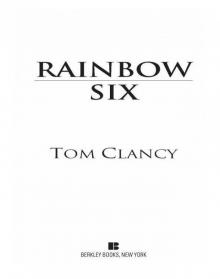 Rainbow Six
Rainbow Six The Hunt for Red October
The Hunt for Red October The Teeth of the Tiger
The Teeth of the Tiger Conviction (2009)
Conviction (2009)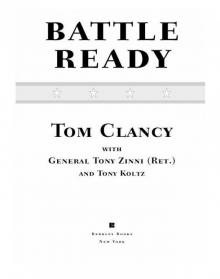 Battle Ready
Battle Ready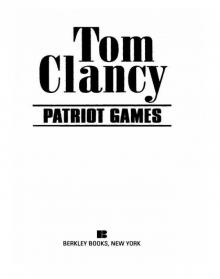 Patriot Games
Patriot Games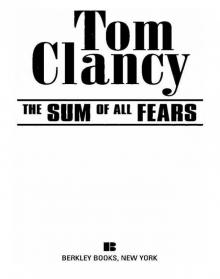 The Sum of All Fears
The Sum of All Fears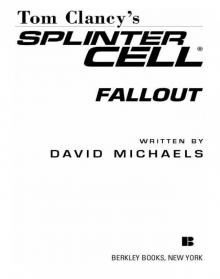 Fallout (2007)
Fallout (2007) Red Storm Rising
Red Storm Rising The Cardinal of the Kremlin
The Cardinal of the Kremlin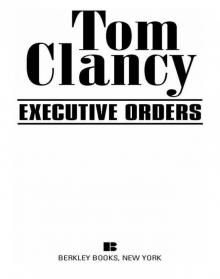 Executive Orders
Executive Orders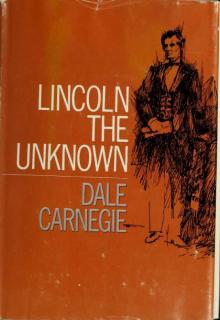 Lincoln, the unknown
Lincoln, the unknown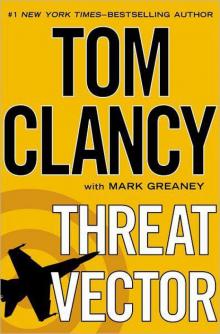 Threat Vector
Threat Vector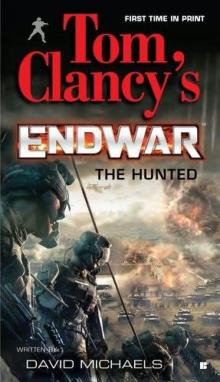 The Hunted
The Hunted Shadow Warriors: Inside the Special Forces
Shadow Warriors: Inside the Special Forces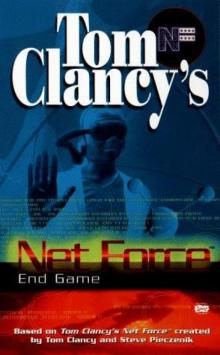 End Game
End Game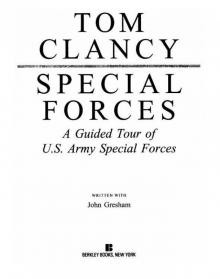 Special Forces: A Guided Tour of U.S. Army Special Forces
Special Forces: A Guided Tour of U.S. Army Special Forces Locked On
Locked On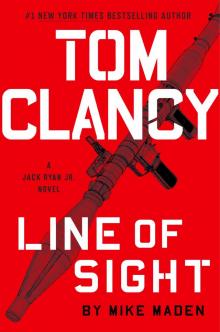 Line of Sight
Line of Sight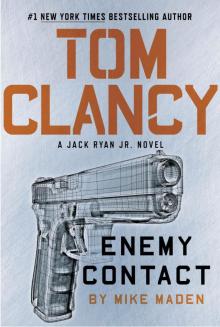 Tom Clancy Enemy Contact - Mike Maden
Tom Clancy Enemy Contact - Mike Maden Fighter Wing: A Guided Tour of an Air Force Combat Wing
Fighter Wing: A Guided Tour of an Air Force Combat Wing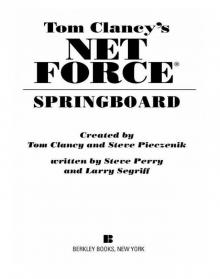 Springboard
Springboard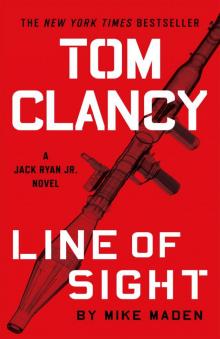 Line of Sight - Mike Maden
Line of Sight - Mike Maden EndWar
EndWar Dead or Alive
Dead or Alive Tom Clancy Support and Defend
Tom Clancy Support and Defend Checkmate
Checkmate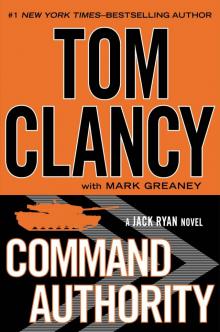 Command Authority
Command Authority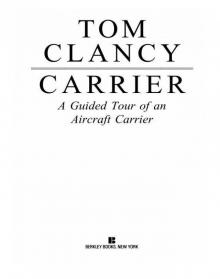 Carrier: A Guided Tour of an Aircraft Carrier
Carrier: A Guided Tour of an Aircraft Carrier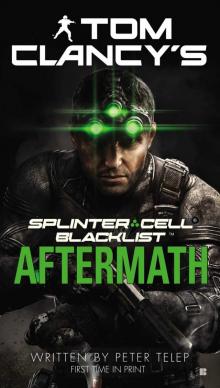 Blacklist Aftermath
Blacklist Aftermath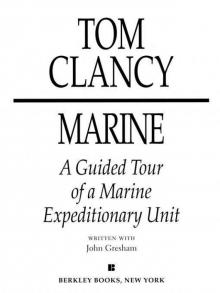 Marine: A Guided Tour of a Marine Expeditionary Unit
Marine: A Guided Tour of a Marine Expeditionary Unit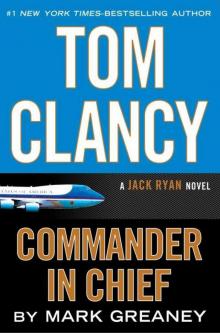 Commander-In-Chief
Commander-In-Chief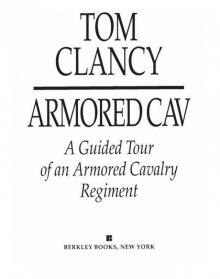 Armored Cav: A Guided Tour of an Armored Cavalry Regiment
Armored Cav: A Guided Tour of an Armored Cavalry Regiment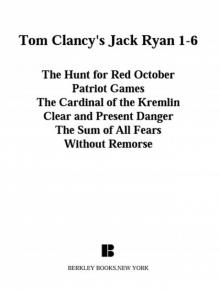 Tom Clancy's Jack Ryan Books 1-6
Tom Clancy's Jack Ryan Books 1-6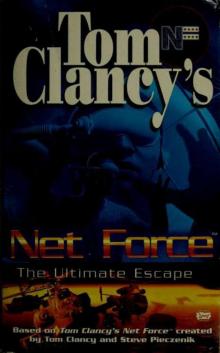 The Ultimate Escape
The Ultimate Escape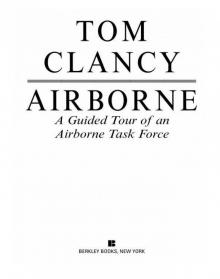 Airborne: A Guided Tour of an Airborne Task Force
Airborne: A Guided Tour of an Airborne Task Force Debt of Honor
Debt of Honor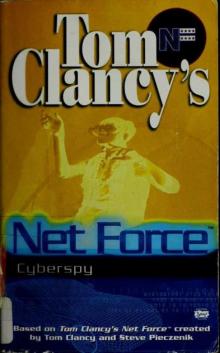 Cyberspy
Cyberspy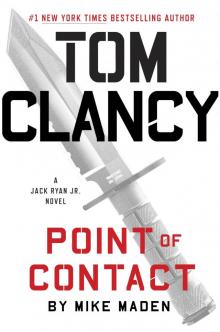 Point of Contact
Point of Contact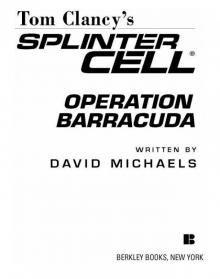 Operation Barracuda (2005)
Operation Barracuda (2005)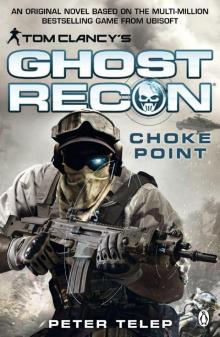 Choke Point
Choke Point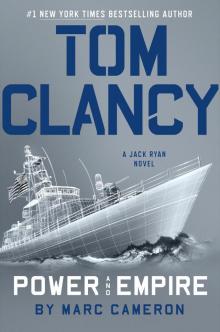 Power and Empire
Power and Empire Every Man a Tiger: The Gulf War Air Campaign
Every Man a Tiger: The Gulf War Air Campaign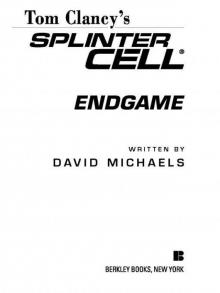 Endgame (1998)
Endgame (1998)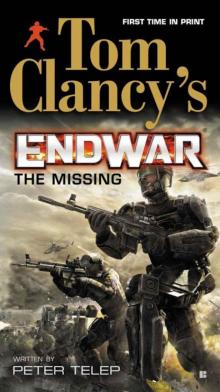 EndWar: The Missing
EndWar: The Missing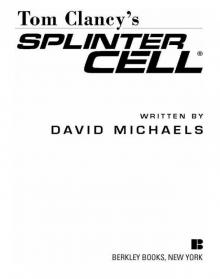 Splinter Cell (2004)
Splinter Cell (2004)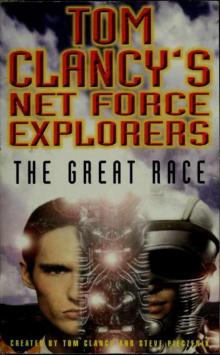 The Great Race
The Great Race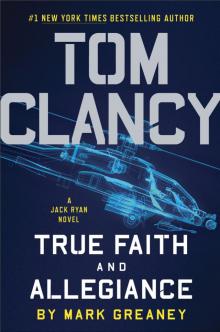 True Faith and Allegiance
True Faith and Allegiance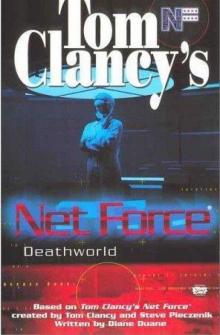 Deathworld
Deathworld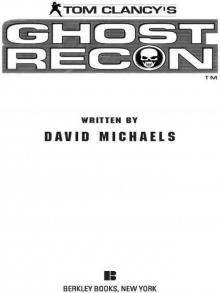 Ghost Recon (2008)
Ghost Recon (2008)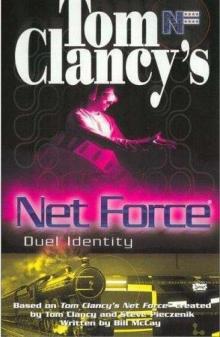 Duel Identity
Duel Identity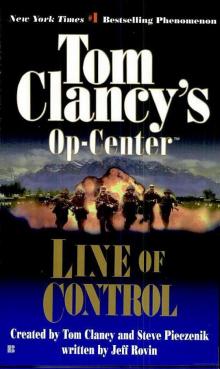 Line of Control o-8
Line of Control o-8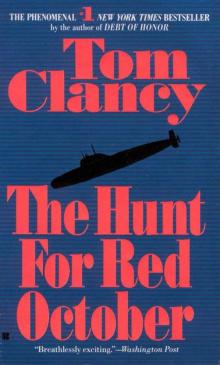 The Hunt for Red October jr-3
The Hunt for Red October jr-3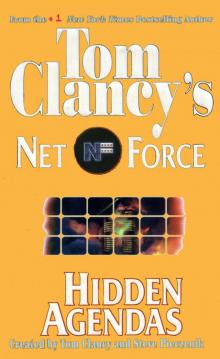 Hidden Agendas nf-2
Hidden Agendas nf-2 Acts of War oc-4
Acts of War oc-4 Ruthless.Com pp-2
Ruthless.Com pp-2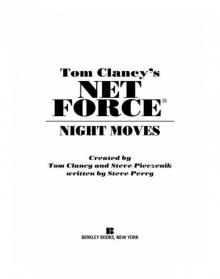 Night Moves
Night Moves The Hounds of Rome - Mystery of a Fugitive Priest
The Hounds of Rome - Mystery of a Fugitive Priest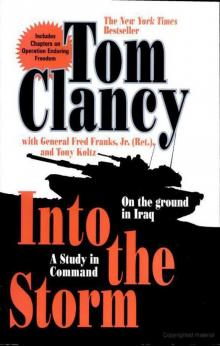 Into the Storm: On the Ground in Iraq sic-1
Into the Storm: On the Ground in Iraq sic-1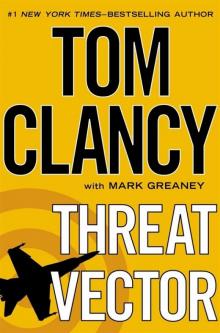 Threat Vector jrj-4
Threat Vector jrj-4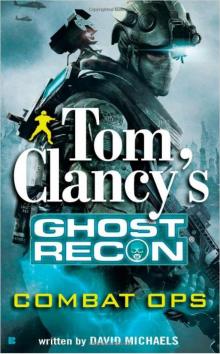 Combat Ops gr-2
Combat Ops gr-2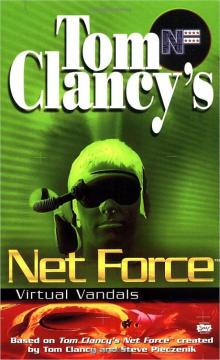 Virtual Vandals nfe-1
Virtual Vandals nfe-1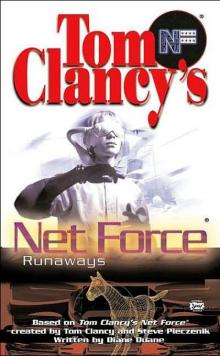 Runaways nfe-16
Runaways nfe-16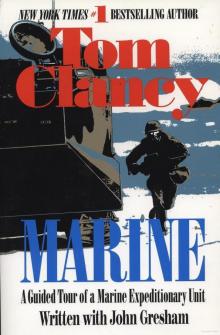 Marine: A Guided Tour of a Marine Expeditionary Unit tcml-4
Marine: A Guided Tour of a Marine Expeditionary Unit tcml-4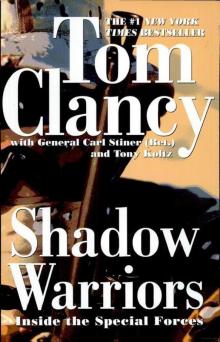 Shadow Warriors: Inside the Special Forces sic-3
Shadow Warriors: Inside the Special Forces sic-3 Jack Ryan Books 1-6
Jack Ryan Books 1-6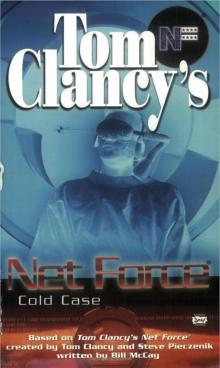 Cold Case nfe-15
Cold Case nfe-15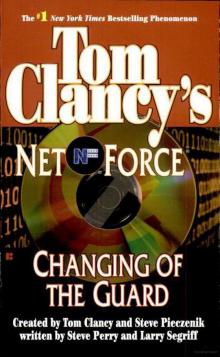 Changing of the Guard nf-8
Changing of the Guard nf-8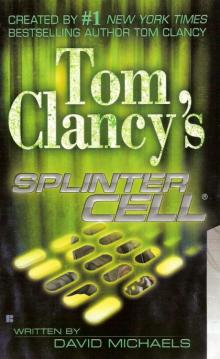 Splinter Cell sc-1
Splinter Cell sc-1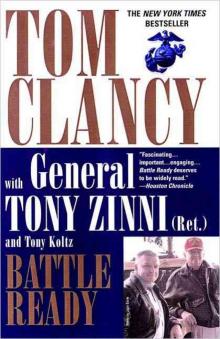 Battle Ready sic-4
Battle Ready sic-4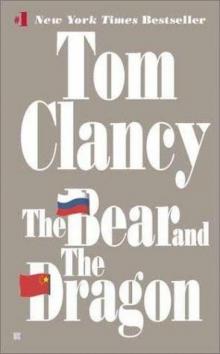 The Bear and the Dragon jrao-11
The Bear and the Dragon jrao-11 Fighter Wing: A Guided Tour of an Air Force Combat Wing tcml-3
Fighter Wing: A Guided Tour of an Air Force Combat Wing tcml-3 Patriot Games jr-1
Patriot Games jr-1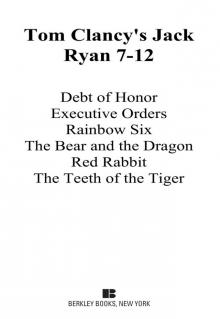 Jack Ryan Books 7-12
Jack Ryan Books 7-12 Mission of Honor o-9
Mission of Honor o-9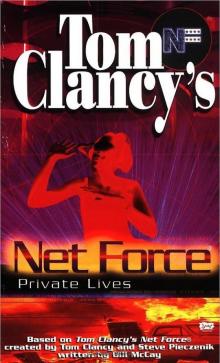 Private Lives nfe-9
Private Lives nfe-9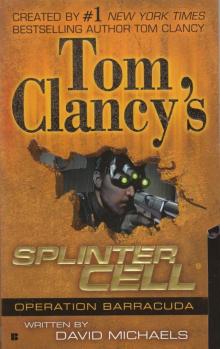 Operation Barracuda sc-2
Operation Barracuda sc-2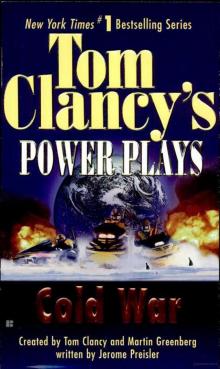 Cold War pp-5
Cold War pp-5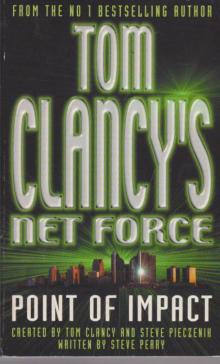 Point of Impact nf-5
Point of Impact nf-5 Red Rabbit jr-9
Red Rabbit jr-9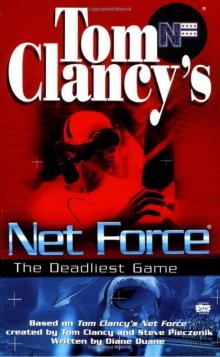 The Deadliest Game nfe-2
The Deadliest Game nfe-2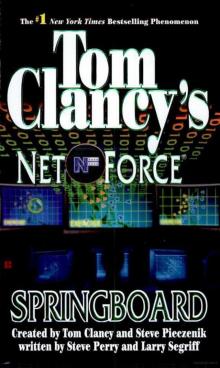 Springboard nf-9
Springboard nf-9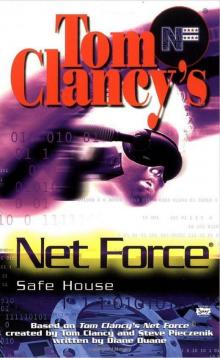 Safe House nfe-10
Safe House nfe-10 EndWar e-1
EndWar e-1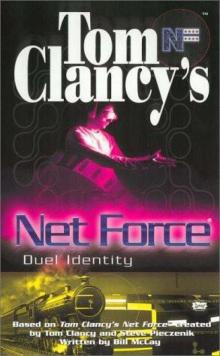 Duel Identity nfe-12
Duel Identity nfe-12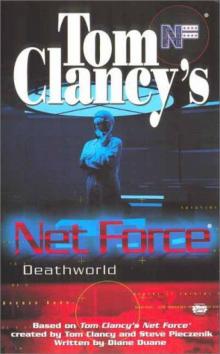 Deathworld nfe-13
Deathworld nfe-13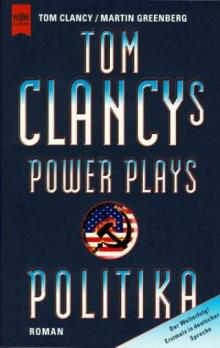 Politika pp-1
Politika pp-1 Rainbow Six jr-9
Rainbow Six jr-9 Tom Clancy's Power Plays 1 - 4
Tom Clancy's Power Plays 1 - 4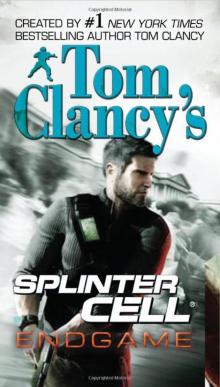 Endgame sc-6
Endgame sc-6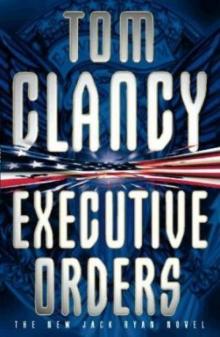 Executive Orders jr-7
Executive Orders jr-7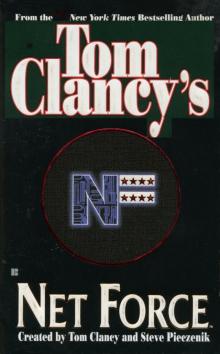 Net Force nf-1
Net Force nf-1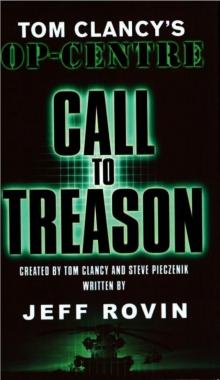 Call to Treason o-11
Call to Treason o-11 Locked On jrj-3
Locked On jrj-3 Against All Enemies
Against All Enemies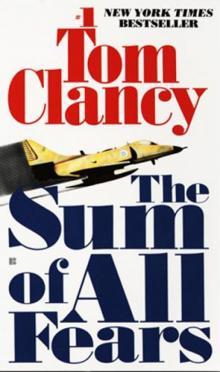 The Sum of All Fears jr-7
The Sum of All Fears jr-7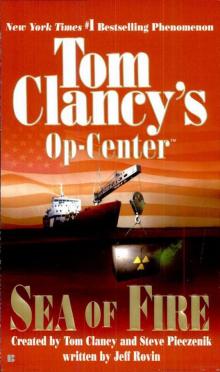 Sea of Fire o-10
Sea of Fire o-10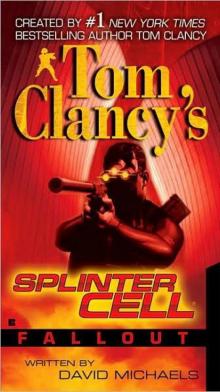 Fallout sc-4
Fallout sc-4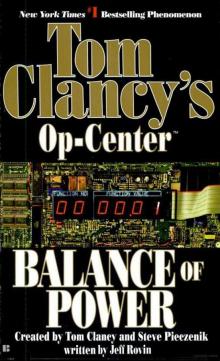 Balance of Power o-5
Balance of Power o-5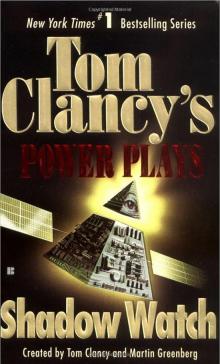 Shadow Watch pp-3
Shadow Watch pp-3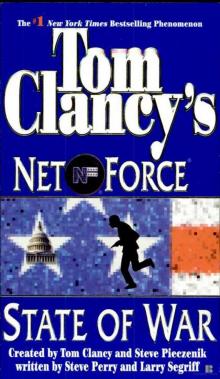 State of War nf-7
State of War nf-7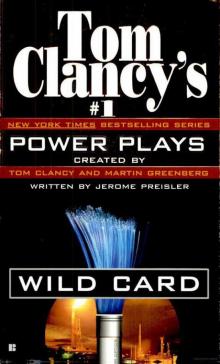 Wild Card pp-8
Wild Card pp-8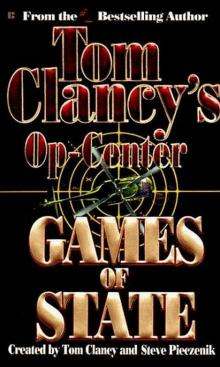 Games of State o-3
Games of State o-3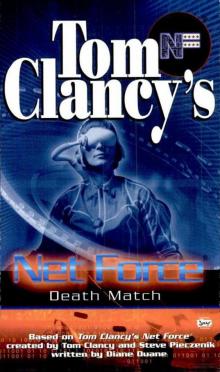 Death Match nfe-18
Death Match nfe-18 Against All Enemies mm-1
Against All Enemies mm-1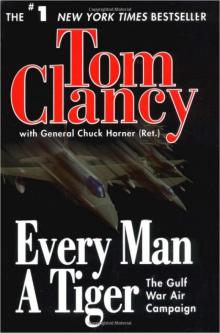 Every Man a Tiger: The Gulf War Air Campaign sic-2
Every Man a Tiger: The Gulf War Air Campaign sic-2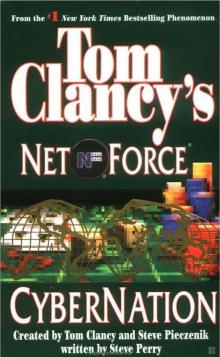 Cybernation nf-6
Cybernation nf-6 Support and Defend
Support and Defend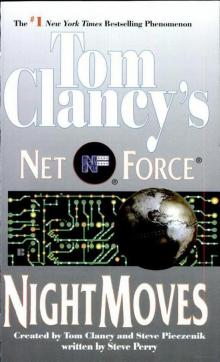 Night Moves nf-3
Night Moves nf-3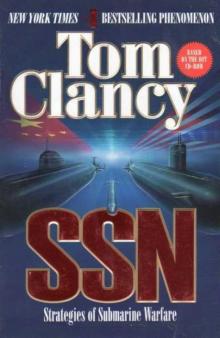 SSN
SSN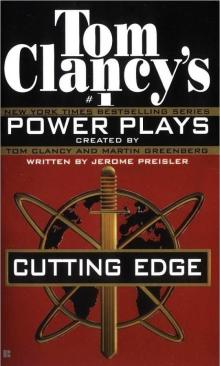 Cutting Edge pp-6
Cutting Edge pp-6 The Cardinal of the Kremlin jrao-5
The Cardinal of the Kremlin jrao-5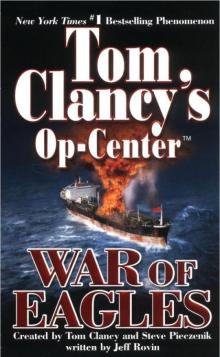 War of Eagles o-12
War of Eagles o-12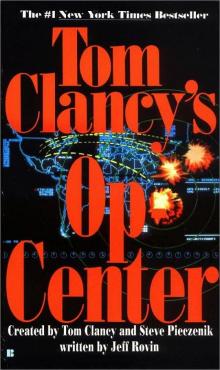 Op-Center o-1
Op-Center o-1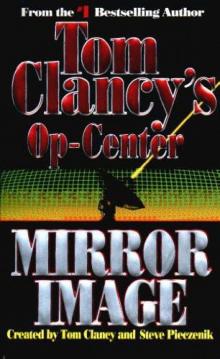 Mirror Image o-2
Mirror Image o-2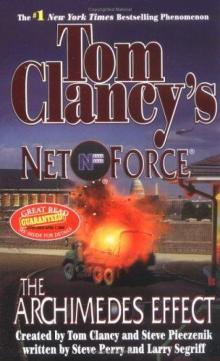 The Archimedes Effect nf-10
The Archimedes Effect nf-10 Teeth of the Tiger jrj-1
Teeth of the Tiger jrj-1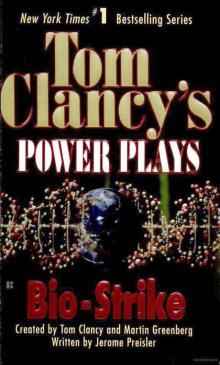 Bio-Strike pp-4
Bio-Strike pp-4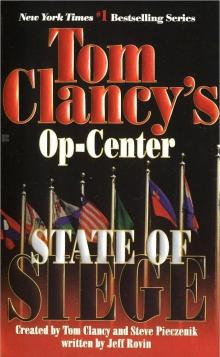 State of Siege o-6
State of Siege o-6 Debt of Honor jr-6
Debt of Honor jr-6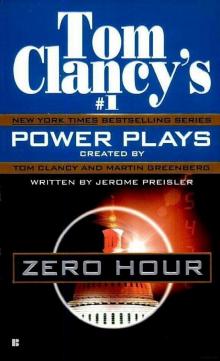 Zero Hour pp-7
Zero Hour pp-7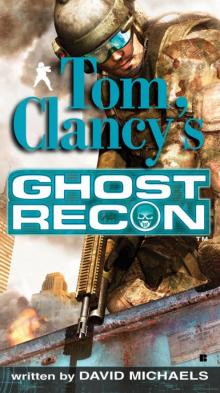 Ghost Recon gr-1
Ghost Recon gr-1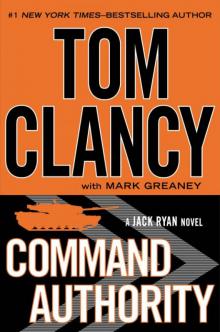 Command Authority jr-10
Command Authority jr-10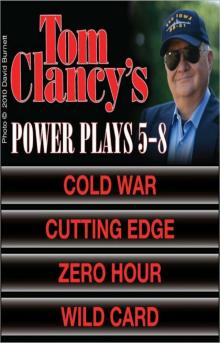 Tom Clancy's Power Plays 5 - 8
Tom Clancy's Power Plays 5 - 8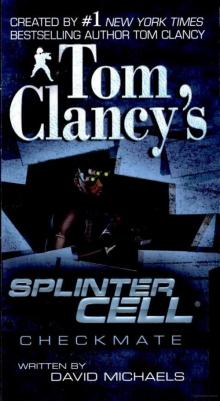 Checkmate sc-3
Checkmate sc-3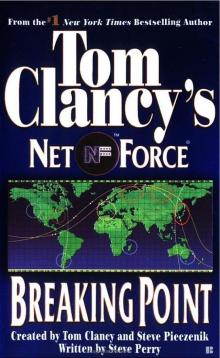 Breaking Point nf-4
Breaking Point nf-4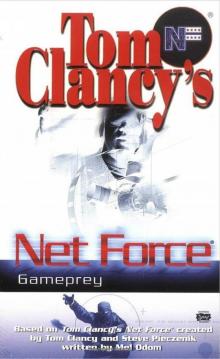 Gameprey nfe-11
Gameprey nfe-11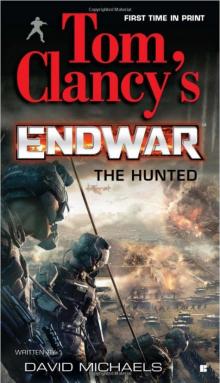 The Hunted e-2
The Hunted e-2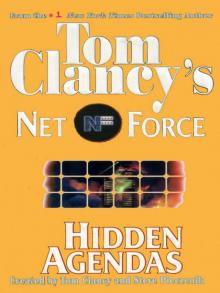 Hidden Agendas
Hidden Agendas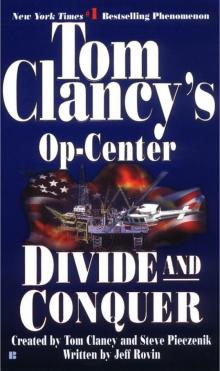 Divide and Conquer o-7
Divide and Conquer o-7